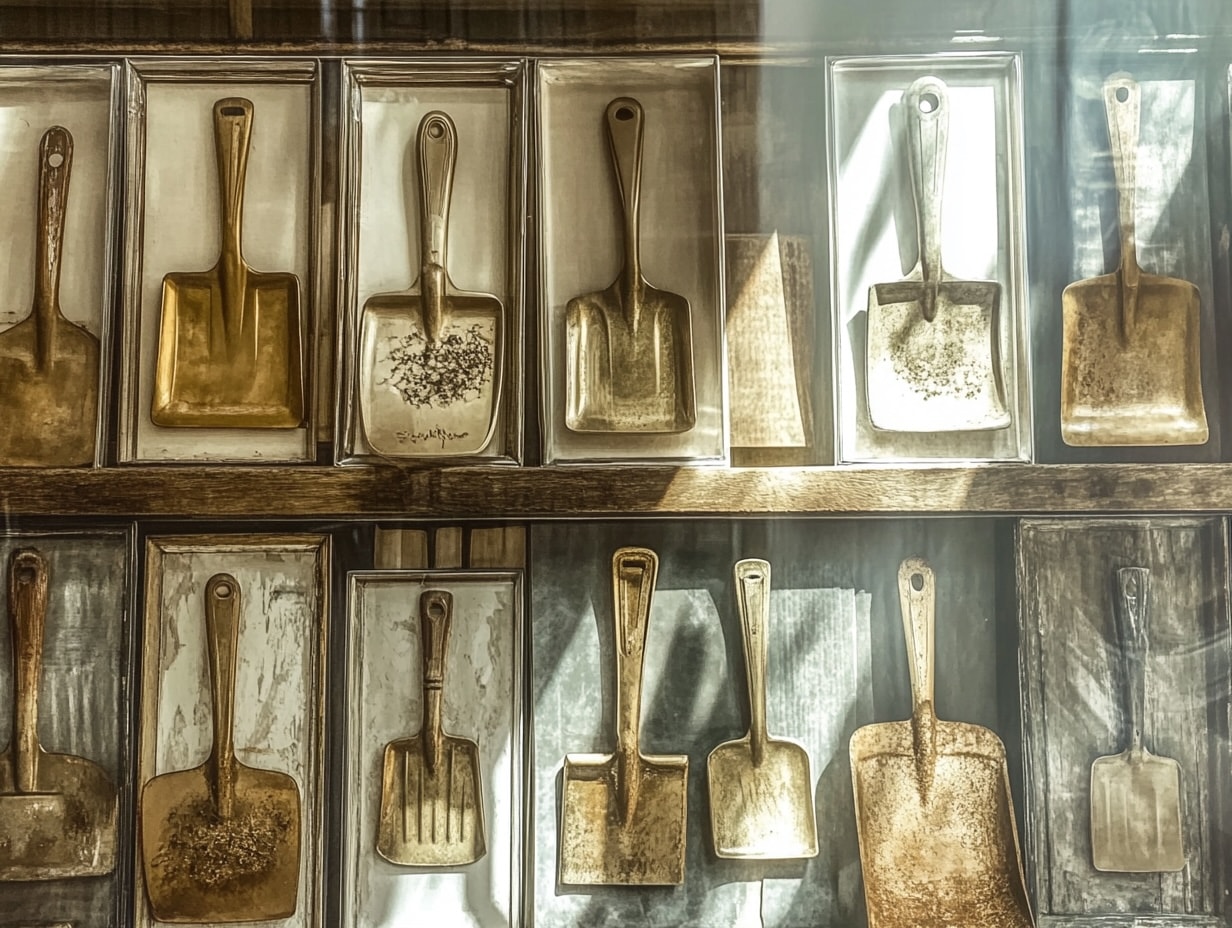
Top Poetry Techniques: A Comprehensive Guide for Aspiring Poets
Want to improve your poetry? Mastering poetry techniques is essential. This article covers key methods like sound devices, structural techniques, and figurative language. Learn how to make your verses more impactful and engaging.
Key Takeaways
-
Understanding poetry techniques enhances a poem’s emotional impact and helps readers connect with the author’s intent.
-
Sound devices, structural techniques, and figurative language are essential tools for poets to create rhythm, imagery, and meaning.
-
Mastering techniques like repetition, enjambment, and metaphor allows poets to craft rich, layered works that resonate on different levels with their audience.
The Importance of Poetry Techniques
Understanding poetry techniques helps analyze a poem’s structure and form, enhancing its meaning and emotional impact. These techniques, often subtle, distinguish poetry from prose and help convey specific atmospheres. Sound devices, for instance, enhance the auditory quality of a poem, creating unity between lines and influencing the poem’s overall mood through poetry analysis.
The poet’s tone, influenced by their choice of words and techniques, significantly affects how readers respond emotionally to the poem. Utilizing various poetic techniques allows poets to weave a rich tapestry of sound, rhythm, and meaning, transforming their words into an immersive experience for the reader.
Exploring poetry techniques and literary techniques can unlock a treasure chest of creative possibilities. Sound devices, structural techniques, and figurative language are tools that help poets craft verses resonating deeply with readers. Mastering these poetic devices not only enhances the creation process but also enriches the reader’s experience, making each poem a unique journey through the poet’s mind.
Sound Devices in Poetry
Sound devices, essential components of poetic craft, subtly alter a poem’s mood and emotion, serving as a poetic device. They are crucial for creating rhythm and mood, distinguishing poetry from prose and enhancing the auditory experience.
Euphony, or harmonious and pleasing sound, and cacophony, the combination of harsh and discordant sounds, are techniques poets use to evoke specific emotions. Longer vowels and soft consonants typically create euphony, while harsh consonant sounds generate cacophony, producing the same sound in different contexts.
Understanding each sound device’s unique qualities and their effects on the poem’s atmosphere is key to mastering them.

Alliteration
Alliteration repeats the same initial consonant sounds in successive words to create rhythm and emphasize themes. In Dante Gabriel Rossetti’s ‘Love Lilly’, the use of alliteration with the ‘b’ sound enhances the poem’s lyrical quality. Similarly, Emily Dickinson’s ‘Much Madness’ uses alliteration to create a musical quality.
Alliteration subtly controls a poem’s mood, influencing the reader’s experience. For instance, harsher sounds like ‘k’ or ‘t’ can create a confrontational tone, while the ‘s’ sound can evoke feelings of danger, adding tension to the poem.
Assonance
Assonance, the repetition of vowel sounds in nearby words, is another powerful tool. Long vowels can convey a serious mood, while short vowels often create a lighter tone. In Keats’ poetry, the assonance of the ‘ee’ sound helps create a dragged-out effect, enhancing the serious tone of the work.
Assonance enhances the auditory qualities of a poem, creating specific atmospheres and enriching the reader’s experience. It can create cohesion within the poem, drawing attention to specific emotions and themes.
Onomatopoeia
Onomatopoeia refers to words that imitate sounds, adding a layer of realism and excitement to poetry. This technique makes lines more memorable and enhances the overall impact of the poem. For example, Sylvia Plath uses ‘achoo’ instead of ‘sneeze’, contributing to the atmosphere of suffocation in her poem.
Onomatopoeia makes a poem more engaging and immersive, drawing readers into the vivid world the poet has created. It adds an auditory dimension to the text, making the imagery more dynamic and memorable.
Structural Techniques in Poetry
Identifying a poem’s structure and rhythm influences its overall effect and interpretation. Breaking down a poem into key components helps understand how they work together to create meaning. Meter, the arrangement of stressed and unstressed syllables, contributes to the poem’s structure and pacing.
Free verse poetry breaks away from traditional structures, offering greater creative freedom. Techniques like enjambment, rhyme schemes, and varied stanza forms shape the poem’s rhythm and impact, guiding the reader through the poet’s intended journey.
Enjambment
Enjambment refers to a line break that interrupts the flow of a sentence, allowing it to continue without a pause into the next line or stanza. This technique creates a sense of urgency and compels readers to continue reading, enhancing the poem’s momentum.
Breaking lines in unexpected places allows poets to emphasize specific words or phrases, adding layers of meaning and emotional intensity. Enjambment keeps the reader engaged, driving the narrative forward and creating a dynamic reading experience.
Rhyme Schemes
Rhyme schemes serve to create rhythm, enhance memorability, and establish atmosphere in poetry. For instance, Ted Hughes uses the ABAA rhyme scheme in ‘A Picture of Otto’, creating an echo effect and ominous atmosphere. Internal rhyme, where rhyming words occur within a line, also contributes to the poem’s musical quality.
Contemporary poets often avoid strict rhyme schemes for fresher, more unique word choices. However, traditional rhyme schemes remain a powerful tool for creating cohesive and engaging poetry.
Stanza Forms
Different stanza forms, such as quatrains and sestinas, define the rhythm and structure of a poem. Quatrains, which consist of a four line stanza, are commonly used in various poetry forms. Traditional ballads, for example, usually consist of quatrains with a strict rhyme scheme and meter.
Different stanza forms shape the overall impact and rhythm of a poem, guiding the reader through themes and emotions. Experimenting with various forms allows poets to find the perfect structure to convey their message effectively.
Figurative Language in Poetry
Figurative language enriches poetry by evoking emotions and painting vivid images for readers. The selection of specific poetic forms can significantly enhance the themes and emotions conveyed in a poem. Imagery, symbolism, and allegory are key techniques used to create deeper connections with the reader.
Repetition enhances emotional significance and creates focal points within the poem. Analyzing the poet’s tone and use of figurative language helps readers gain a deeper understanding of the poem’s emotional impact.

Metaphor
Metaphor makes direct comparisons between two unlike things, enriching a poem’s meaning and emotional impact. Metaphors allow poets to convey complex ideas and emotions more vividly than literal language.
For example, using a rose to symbolize love can add depth and nuance to a poem, allowing readers to interpret multiple layers of meaning. Metaphors transform abstract concepts into tangible images, making them more relatable and impactful.
Simile
Similes create relatable imagery by drawing direct comparisons between dissimilar things. A simile uses ‘like’ or ‘as’ to compare two unlike things, making the imagery more vivid and accessible.
For example, a simile in Latin poetry might describe a person ‘like a rose in bloom,’ conveying beauty and fragility. Similes enhance the reader’s understanding of the poem’s themes by creating clear and relatable images.
Personification
Personification attributes human traits to non-human entities, enriching the imagery and emotional depth of poetry. In John Keats’ poem ‘To Autumn,’ autumn is depicted as conspiring with the sun, suggesting a harmony between nature and time.
In Emily Dickinson’s poem about Death, the concept is personified as a courteous figure who stops for the narrator, transforming a typically fearsome subject into something more relatable.
Personification allows poets to forge unique relationships with the elements of nature or objects, making the imagery more vivid and emotionally engaging.
Mastering Meter and Rhythm
Meter is the arrangement of stressed and unstressed syllables, creating rhythm within a poem. Understanding meter equips poets with tools to structure their work and create a desirable rhythmic flow. Iambic pentameter, featuring five pairs of stressed syllables and a stressed syllable, is a common meter found in English poetry, emphasizing the importance of stressed syllables.
Contemporary poets may still use meter in their works, blending tradition with innovation. Repetition, rhyme schemes, and varying meter significantly contribute to the musical quality of poetry, making it memorable and engaging.
Iambic Pentameter
Iambic pentameter consists of five pairs of syllables, where each pair follows an unstressed-stressed pattern. This meter is a common feature in English poetry, providing a rhythmic structure that enhances the meaning and flow of the poem.
Many famous works, such as Shakespeare’s sonnets, utilize iambic pentameter, demonstrating its enduring appeal and effectiveness in creating a musical and engaging reading experience.
Free Verse
Free verse, poetry without strict rhyme schemes or meter, allows for greater artistic expression and flexibility. It can create various effects, from a conversational tone to a more fragmented, stream-of-consciousness style.
Free verse allows poets to break away from traditional structures, providing the freedom to experiment with different rhythms and forms. This creative freedom can result in innovative and unique poetic works that resonate deeply with readers.
Blank Verse
Blank verse, characterized by unrhymed lines of iambic pentameter, balances form and flexibility in poetic expression. This structure allows poets to maintain a rhythmic flow without the constraints of rhyme, providing a versatile tool for poetic storytelling.
John Milton’s ‘Paradise Lost’ exemplifies blank verse, showcasing the effective use of unrhymed iambic pentameter to convey complex themes and narratives. Using blank verse allows poets to create a flowing, engaging rhythm while retaining the freedom to explore varied themes and ideas.

Enhancing Themes with Repetition
Repetition is a crucial device in poetry as it reinforces core themes and enhances emotional impact. Techniques like alliteration and repeated lines serve to emphasize essential themes and create memorable images. Employing repetition allows poets to underline the primary themes of their works, making them resonate more deeply with readers.
Repetition creates rhythm and draws attention to specific elements of the poem, making it easier for readers to connect with the underlying message. Anaphora, epistrophe, and refrains are powerful tools that enhance the thematic elements of poetry.
Anaphora
Anaphora is the repetition of the first word or clause in consecutive lines, creating a repetitive feeling that imitates a rocking cradle. This technique is heavily relied upon by poets like Whitman in his poem ‘Out of the Cradle’ using the same words.
Anaphora creates rhythm, makes lines memorable, draws emotions, and can be used symbolically. Repeating key phrases highlights important themes and creates a powerful emotional impact.
Epistrophe
Epistrophe is the repetition of the same word or phrase at the end of lines in poetry, creating a powerful rhythm and emphasis. In Sylvia Plath’s poem ‘Lady Lazarus’, the repeated use of the word ‘beware’ emphasizes themes of fear and defiance.
Repeating phrases at the end of lines, epistrophe evokes urgency and focuses on the expressed theme. This technique helps to reinforce the poem’s message and leaves a lasting impression on the reader.
Refrain
A refrain is a recurring line or stanza in poetry that emphasizes key themes. Villanelles and ballads often incorporate refrains to highlight critical moments within the narrative. Refrains are also commonly found in nursery rhymes, helping to make themes more memorable and engaging for children.
Using refrains creates a sense of unity and coherence within poems, reinforcing central themes and making them more impactful.
Imagery and Symbolism
Imagery and symbolism create sensory experiences and convey abstract ideas in poetry. By employing vivid descriptions and symbols, poets can evoke emotions and create deeper connections with readers.
Onomatopoeia and personification enhance the sensory experience and realism of the poem, drawing the reader into a more immersive experience. These elements transform the poem into a rich tapestry of meaning and emotion.
Vivid Descriptions
Vivid descriptions enhance the emotional impact of a poem by allowing readers to engage their senses. An example of vivid imagery can be seen in the phrase ‘As blue as drowned men’s lips’, which conveys a strong visual and emotional impression.
Detailed sensory imagery allows poets to evoke specific atmospheres and connect readers to the poem’s deeper emotional themes. This technique makes the poem more engaging and memorable, leaving a lasting impact on the reader.
Symbolism
Symbols in poetry represent complex, abstract ideas using a single image, word, or phrase. In T.S. Eliot’s ‘The Waste Land’, the symbols convey the never-ending effects of war. Symbols add layers of meaning to a poet’s work, enhancing the overall emotional impact.
For instance, Kenneth Slessor’s poem ‘Beach Burial’ uses symbolism to create an ominous mood. Symbols make the poem more profound, allowing readers to interpret multiple layers of meaning.
Allegory
An allegory is a narrative technique where characters or events symbolize broader concepts, creating layers of meaning. Petrarchan sonnets frequently contain allegorical themes, using personal experiences to comment on universal ideals like love and morality.
In allegory, the entire poem represents a larger concept or moral lesson, often through an extended metaphor that pervades the work. This technique allows poets to convey complex messages in a more accessible and engaging way.
Summary
Throughout this guide, we’ve explored the key poetic techniques that aspiring poets can use to enhance their craft. From sound devices that create rhythm and mood to figurative language that evokes vivid images, each technique plays a crucial role in transforming a simple verse into a powerful poem. By mastering these techniques, poets can create works that resonate deeply with readers, leaving a lasting impression. Embrace these tools, experiment with different forms, and let your creativity soar.

Frequently Asked Questions
What are the techniques of found poetry?
Found poetry techniques include making line breaks and cutting out excess words from original texts, allowing the existing language to take on fresh, deeper meanings. It’s all about recontextualizing words you find in everyday life!
What is the importance of poetry techniques?
Poetry techniques are crucial because they help us appreciate a poem's structure and amplify its emotional resonance. By recognizing these techniques, we gain deeper insights into the poet's message and intent.
How do sound devices affect a poem?
Sound devices are key in shaping the rhythm and mood of a poem, making it more engaging and elevating the overall auditory experience. They really help to bring the words to life!
What is the role of figurative language in poetry?
Figurative language is key in poetry because it evokes emotions and creates vivid imagery, bringing the poem to life for readers. It deepens the connection and enhances the overall experience.
How does enjambment affect a poem?
Enjambment enhances a poem's flow and creates urgency, encouraging you to keep reading. It can really draw you into the emotional depth of the piece.




